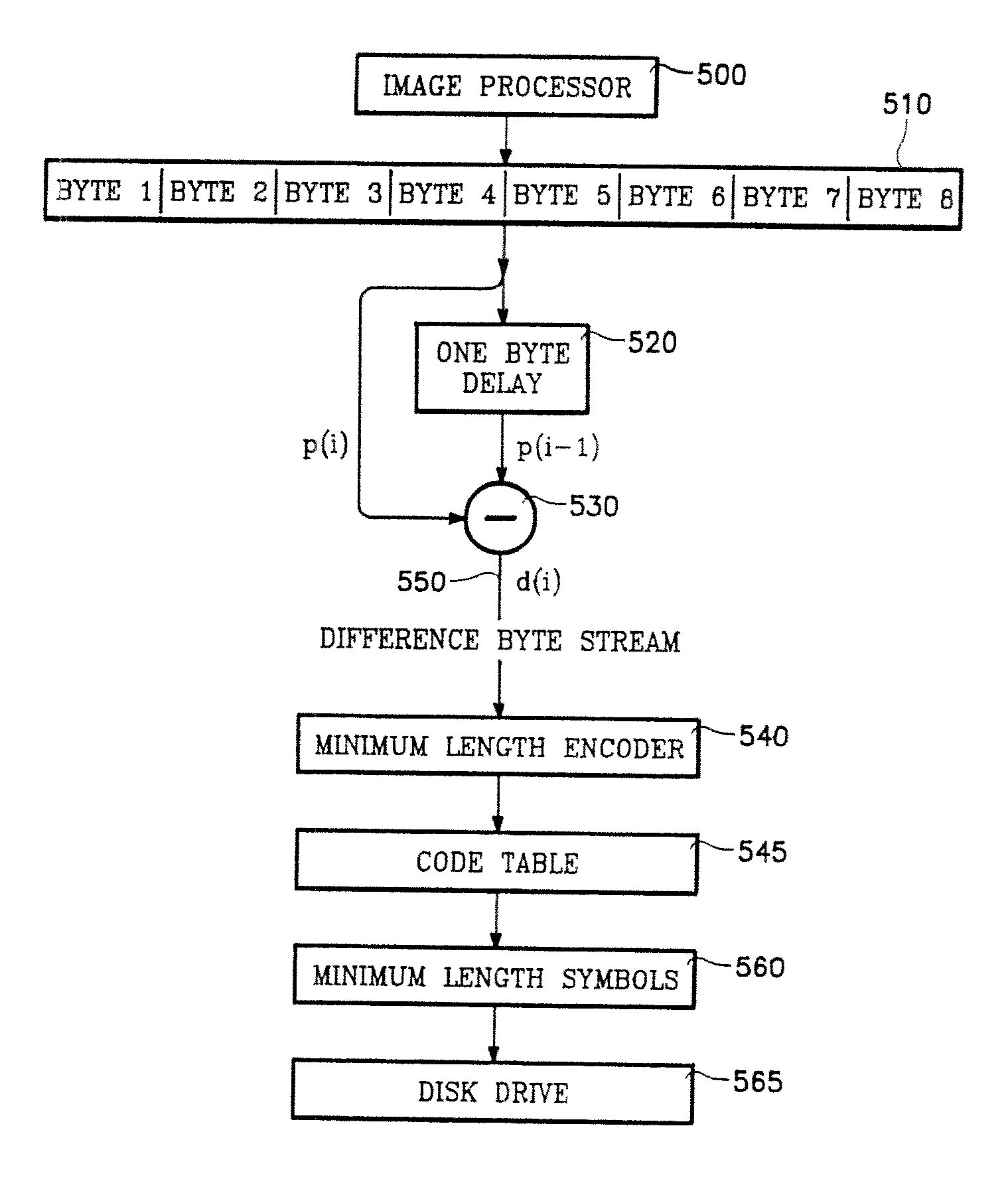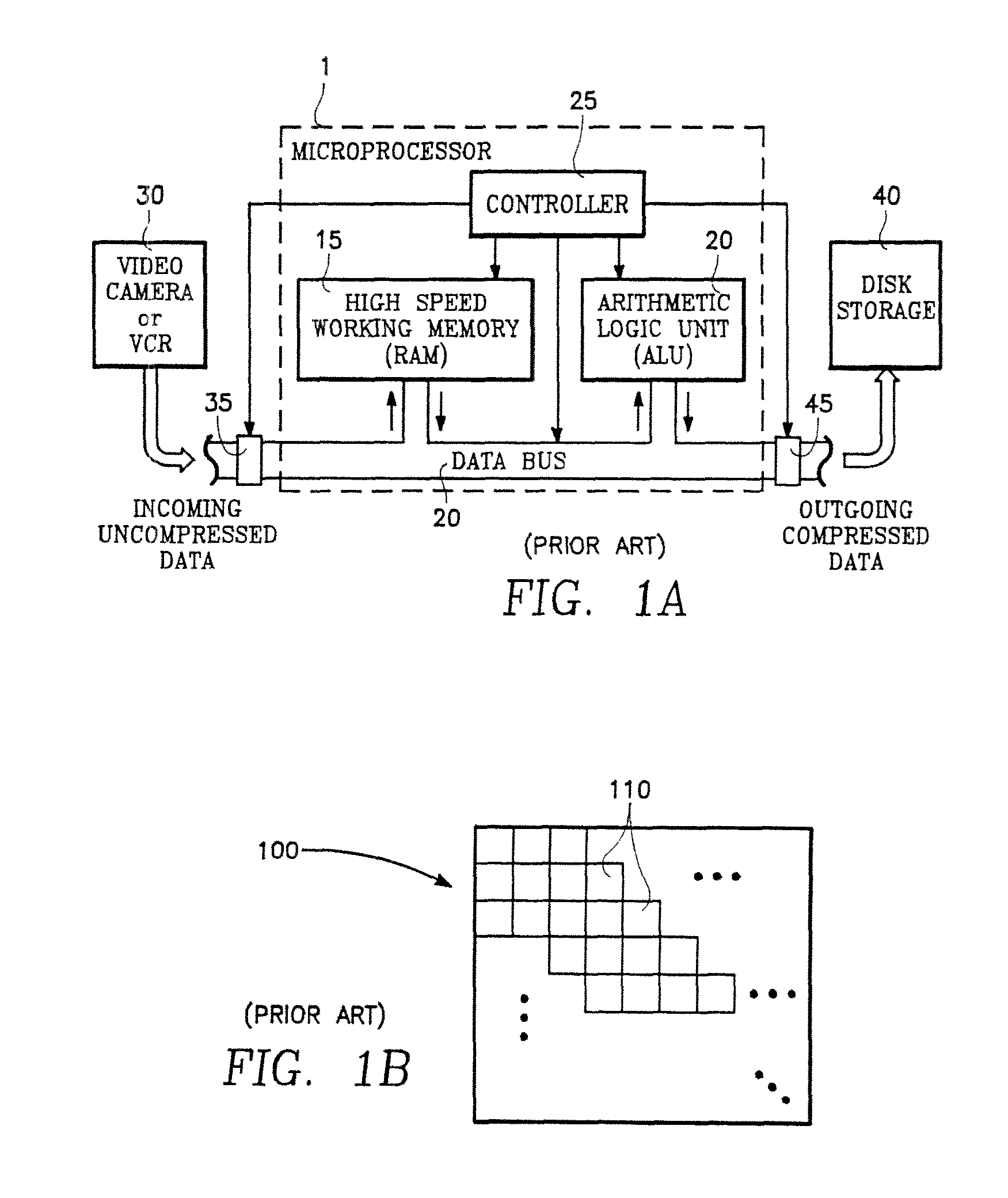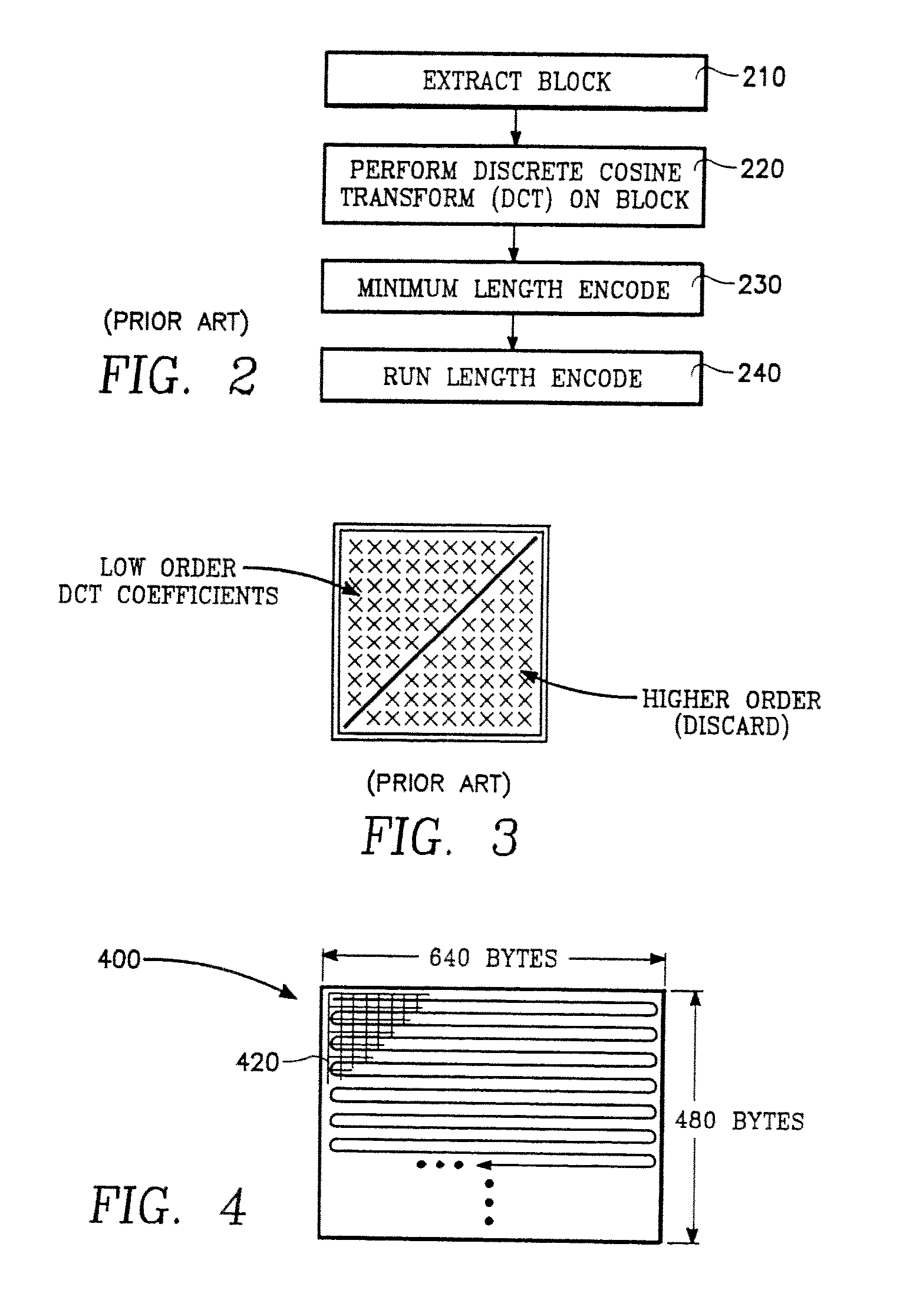Lossless video data compressor with very high data rate
a video data compressor and data rate technology, applied in computing, instruments, electrical equipment, etc., can solve the problems of lossless entire compression and decompression cycle, reduce the dynamic range of data, etc., and achieve the effect of no loss of information or image quality
- Summary
- Abstract
- Description
- Claims
- Application Information
AI Technical Summary
Benefits of technology
Problems solved by technology
Method used
Image
Examples
Embodiment Construction
Compression:
[0027]Referring to FIG. 4, each individual frame 400 is a two-dimensional array of picture elements (“pixels”) 420, the picture elements 420 being arranged in rows and columns of pixels. Following analog-to-digital conversion of the video frame, each pixel is represented by a byte, such as an 8-bit byte, so that the digital representation of a video frame is a two dimensional array of 8-bit bytes corresponding to the array of pixels 420 of FIG. 4, for example. Such bytes may be referred to as “video pixel bytes”. Each pixel byte represents the intensity of the corresponding pixel. Hereinafter, the term “video frame” shall refer to the array of video pixel bytes. If the video frame was derived from an NTSC video signal, then the video frame has 640 columns and 480 rows of video pixel bytes corresponding to the array of pixels 420 of FIG. 4. Hereinafter, the pixels 420 of FIG. 4 shall be considered herein as synonymous with video pixel bytes. If the video frame represents ...
PUM
 Login to View More
Login to View More Abstract
Description
Claims
Application Information
 Login to View More
Login to View More - R&D
- Intellectual Property
- Life Sciences
- Materials
- Tech Scout
- Unparalleled Data Quality
- Higher Quality Content
- 60% Fewer Hallucinations
Browse by: Latest US Patents, China's latest patents, Technical Efficacy Thesaurus, Application Domain, Technology Topic, Popular Technical Reports.
© 2025 PatSnap. All rights reserved.Legal|Privacy policy|Modern Slavery Act Transparency Statement|Sitemap|About US| Contact US: help@patsnap.com



